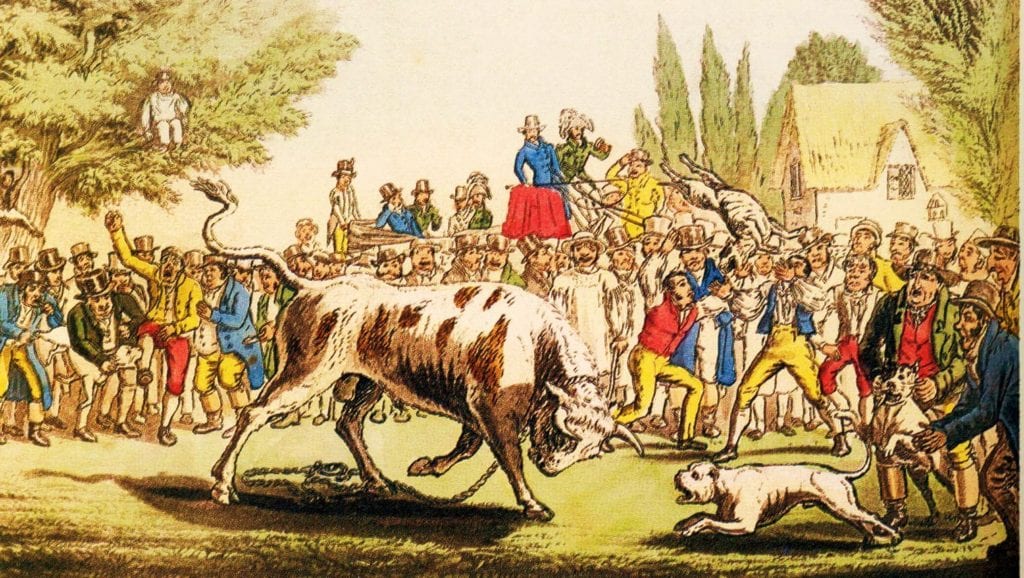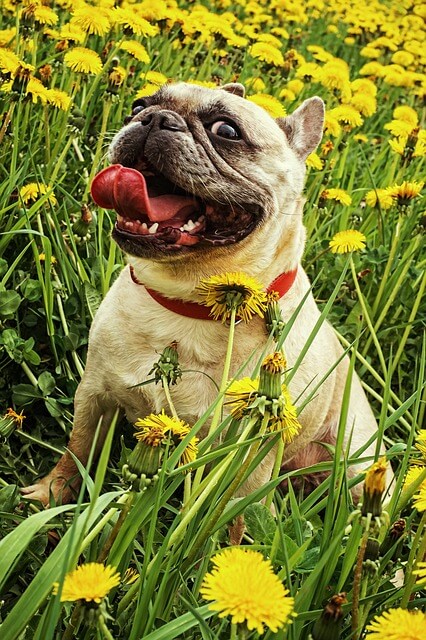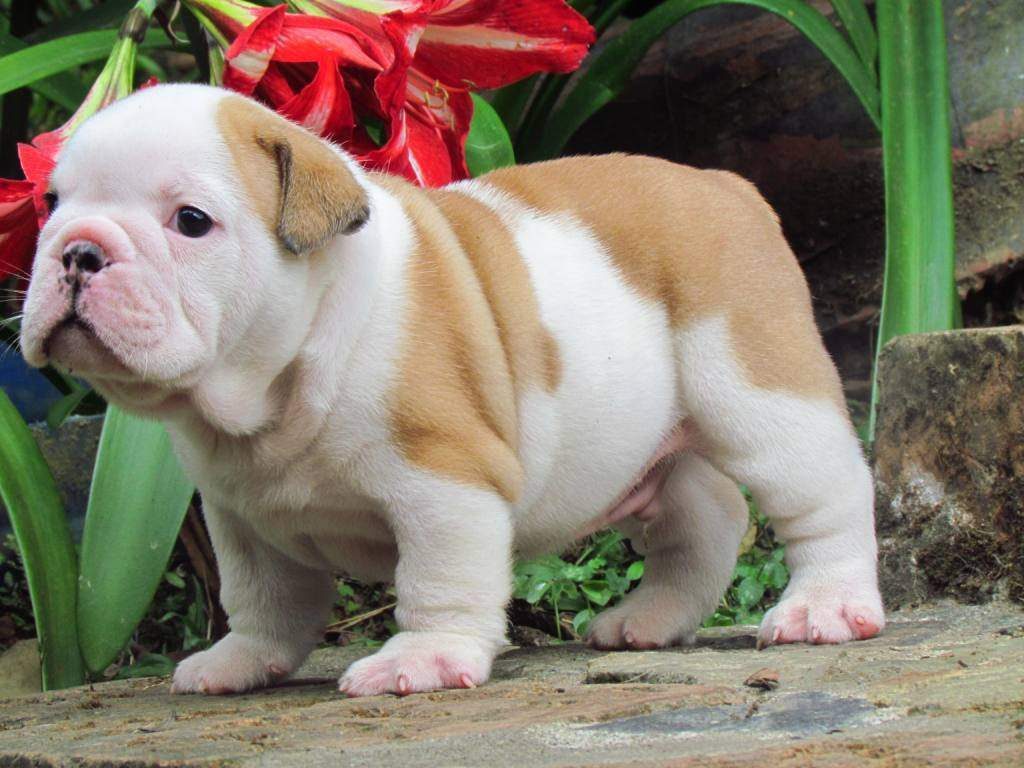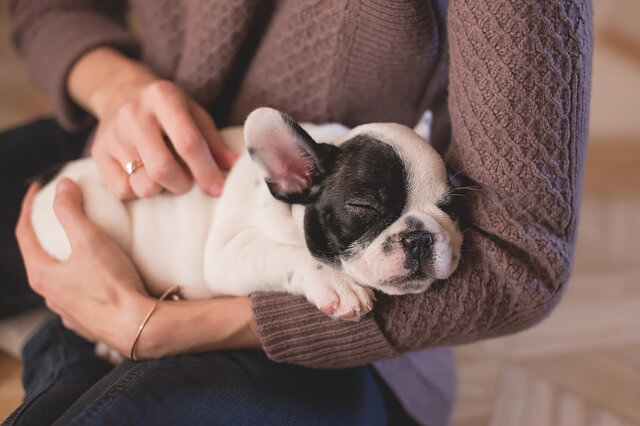The Bulldog is a medium-sized breed of dog commonly referred to as the English Bulldog or British Bulldog. Other Bulldog breeds include the American Bulldog, Old English Bulldog, Leavitt Bulldog, Olde English Bulldogge, and the French Bulldog.
Today’s lots of different dog breeds available in the world. But we will discuss some information about the Bulldog dog breed. This is a large, medium-size dog having short legs. Today, they’re gentle companions who love kids. The Bulldog is a muscular, hefty dog with a wrinkled face and a distinctive pushed-in nose.
If you own a bulldog and would like to share information with us or have pictures that you would like to be included in our dog gallery, we would love to hear from you. Contact here
Bulldog Content overview
- Interesting facts
- History
- Different names and types
- Appearance and Characteristics
- Personality and Temperament
- Health & problems
- How to take care?
- Puppy Information
- Puppy price
- Things to consider adopting a puppy
- Advantages & Disadvantages
- Photo gallery
10 Interesting facts about Bulldogs
Bulldogs are one of the most popular dogs in the world. They have a long and illustrious history. Here are some interesting facts about Bulldogs.
1. Bulldogs are the 6th most popular breed in America, according to American Kennel Club. In Los Angeles, though, bulldogs are the number one dog breed.
2. They Serve as Mascots – Due to their strong appearance and build, bulldogs are among the most popular mascots for sports teams and universities.
3. Bulldogs come in 10 different colors and four different markings. This could mean brindle, fawn, piebald and more.
4. They have Celebrity Owners – Celebrities such as Martha Stewart, David Beckham, Ashley Olsen, Hugh Jackman, Reese Witherspoon and Zac Efron own or have owned bulldogs.
5. The oldest single breed specialty club is England’s The Bulldog Club (formed in 1878), met regularly at the Blue Post pub on Oxford Street, London.
6. Bulldogs are Great for City Dwellers – Bulldogs don’t require a great deal of exercise, so a quick tour around the block during the not-so-hot part of the day and hang sessions on the couch fit the bill perfectly for this medium-energy dog.
7. Bulldogs have suffered the most airline deaths of any breed due to their respiratory issues. They often suffer from hip dysplasia and other medical concerns.
8. They Don’t Swim Well – Bulldogs have larger skulls, short legs and a wide body. This makes it difficult for bulldogs to swim and remain above water.
9. French bulldogs are the smallest of the popular breeds in the U.S., with American bulldogs weighing in with the largest adult sizes.
10. They have been Owned by Presidents – The 29th president of the United States, President Warren G. Harding, owned an English bulldog.
History of Bulldog

Source: baggybulldogs.wordpress.com
The Bulldog is a medium-size, which is native to England. It’s much different today than their ancestors. This breed was derived from the Mastiff-type dogs, and it was developed entirely in England. It’s originally used in the cattle drive market, and it was used to compete bull baiting called a bloody game. The English Bulldog has been a popular breed since the late 1800s and was Initially bred for ferocity and courage.
The Bulldog is a popular dog in the U.S. English bulldog seems to have originated in the British Isles sometime before the 13th century. Today, the English Bulldog makes a good family pet. The AKC recognizes the breed simply as the Bulldog. View more history.
In 1864, the first Bulldog breed club was formed by a man named R.S. Rockstro. And in 1875, another Bulldog club was founded, and it developed a breed standard that was similar to the Philo-Kuon. This breed club is still in existence. The American Kennel Club recognized the Bulldog in 1890. During the 1940s and 1950s, the Bulldogs were close to the top 10 breeds in popularity.
In 1861, a Bulldog named King Dick won at the Birmingham show. The Bulldog has such a mild temperament and is very loyal and gentle. It makes an ideal family pet, especially for people who live in the city. In the U.S. alone, the Bulldog represents nearly four dozen universities and 250 secondary schools.
The modern bulldog breeds descended from these dogs, and those re-created through breeding programs include American Bulldog, Alapaha blue blood bulldog, French Bulldog, Aussie Bulldog, Valley Bulldog, English Bulldog, Olde English Bulldogge, Olde Boston Bulldogge, Victorian Bulldog.
Different names of bulldog
- English Bulldog
- British Bulldog
Types of Bulldog
What are the different types of Bulldogs?
- American Bulldog
- Amitola Bulldog
- Australian Bulldog
- Bonsai Bulldogge
- Campeiro Bulldog
- Bull Terrier
- Bullmastiff
- French Bulldog
- Catahoula Bulldog
- Leavitt Bulldog
- Mallorquin Bulldog
- Mammut Bulldog
- Valley Bulldog
- Vanguard Bulldog
- White English Bulldog
Recognition
- American Kennel Club – AKC
- United Kennel Club – UKC
- Continental Kennel Club – CKC
- Kennel Club of Great Britain – KCGB
- National Kennel Club – NKC
- Canadian Kennel Club – CKC
- Australian National Kennel Club – ANKC
- American Pet Registry, Inc. – APRI
- New Zealand Kennel Club – NZKC
- American Canine Association, Inc. – ACA
- Dog Registry of America, Inc. – DRA
- North American Purebred Registry, Inc – NAPR
- American Canine Registry – ACR
Appearance & Characteristics
Bulldogs are short, compact, incredibly muscular and broad dogs. The longer back legs are strong and muscular, while the moderate-size feet are firmly set with compact toes and short stubby nails. The perfect Bulldog must be of medium size and smooth coat; with the heavy, thickset, low-swung body, massive short-faced head, wide shoulders and sturdy limbs. The general appearance and attitude should suggest great stability, vigor and strength.
Breed basic characteristics

Country of Origin: England
Dog Breed Group: Companion Dogs
Lifespan: 8-10 years
Trainability: –
Friendliness: –
Exercise Needs: Daily exercise
Energy Level: Not Very Active
Shedding: Seasonal
Barking Level: Quiet
Grooming: Weekly
Good with Children: Yes
Protective Ability:
Hypoallergenic Breed:
Space Requirements: House with Yard
Compatibility With Other Pets:
Litter Size: 4 to 5 puppies
Height/Weight
Height: 14 to 15 inches
Weight: 50 – 55 pounds (male), 40 – 51 pounds (female)
Sound
Behavior
Size, Proportion, Substance
Size:
In the United Kingdom, the breed standards are 55 lb (25 kg) for males and 50 lb (23 kg) for females. In the United States, a typical mature male weighs 50 lbs (23 kg), while mature females weigh about 40 lb (18 kg). The BCA recommends the average weight to be 40–50 lbs (18–23 kg).
Proportion: The circumference of the skull in front of the ears should measure at least the height of the dog at the shoulders.
Substance: Mascular, heavy bone.
Serious Faults:
Head
The head should appear very high and very short from the point of the nose to the occiput. The forehead should be flat, neither too prominent nor overhanging the face.
Skull: The skull should be very large and in front of the ears, should measure at least the height of the dog at the shoulders.
Muzzle: Muzzle short, broad, turned upwards and deep from the corner of the eye to the corner of the mouth. If present, whole or broken, over nose wrinkle must never adversely affect or obscure eyes or nose.
Eyes: The eyes, seen from the front, should be situated low down in the skull, as far from the ears as possible, and their corners should be in a straight line at right angles with the stop.
Ears: The ears should be set high in the head, the front inner edge of each ear joining the outline of the skull at the top back corner of the skull, place them as wide apart, and as high, and as far from the eyes as possible.
Teeth:
Serious Faults:
Neck, Topline, Body
Neck: The neck should be short, very thick, deep and strong and well arched at the back
Topline: There should be a slight fall in the back, close behind the shoulders, whence the spine should rise to the loins.
Body: The brisket and body should be very spacious, with full sides, well-rounded ribs and very deep from the shoulders down to its lowest part, where it joins the chest.
Chest: The chest should be very broad, deep and full. Underline – The body should be well ribbed up behind with the belly tucked up and not rotund.
Serious Faults:
Forequarters
Shoulders: The shoulders should be muscular, very heavy, widespread and slanting outward, giving stability and great power.
Forelegs: The forelegs should be short, very stout, straight and muscular, set wide apart, with well-developed calves, presenting a bowed outline, but the bones of the legs should not be curved or bandy, nor the feet brought too close together.
Feet: The feet should be moderate in size, compact and firmly set. Toes compact, well split up, with high knuckles and very short stubby nails. The front feet may be straight or slightly out-turned.
Hindquarters
Rear Legs:
Hind Legs: The hind legs should be strong and muscular and longer than the forelegs to elevate the loins above the shoulders.
Tail:
Coat
The coat should be straight, short, flat, close, fine texture, smooth and glossy.
Winter Coat:
Summer Coat:
Shedding:
Bulldogs have a short, fine, smooth coat. The good news about this is that it can make cleanup a relatively simple job when they do shed. The coat also matures with age, and a bulldog puppy will typically shed more than the adult version later in its life.
Color and Markings
Coat Color and Markings
The color of Coat – The color coat should be uniform, pure of its kind and brilliant. The various colors found in the breed are to be preferred in the following order:
- Red brindle
- All other brindles
- Solid white
- Solid red, fawn or fallow
- Piebald
- Inferior qualities of all the foregoing.
Gait: The style and carriage are peculiar, his gait being a loose-jointed, shuffling, sidewise motion, giving the characteristic “roll.” The action must, however, be unrestrained, free and vigorous.
Personality and Temperament of Bulldog

Source: adsark.com
This is a medium-sized, compact, wide dog with short legs. The body and head are massive, with extra skin on both the skull and forehead falling in folds. Black nose of dogs in this race is wide with a big nose. Bulldog dog is friendly and affectionate.
It tends to get along with everyone. Bulldogs look is enough to scare the intruders. The Bulldog is a very courageous and brave dog. People make a great companion bulldog with children and families for its tolerant attitude, amiable disposition. The Bulldog has a moderate energy level; it is friendly for everyone. Bulldogs are sensitive to cold weather and its short noses, making them prone to several respiratory ailments.
His calm nature and enjoy a relaxed lifestyle that is perfect for any one of them. This is also a good personality of the dogs of the breed. If you are looking for a dog for adoption, the breed is good for you because of the breed’s peaceful nature. The Bulldog is highly appreciated for its patience and affection with children, making them excellent family pets.
Bulldog described as affectionate and dependable, it’s known for courage and excellent guarding abilities. They are good with other pets, but some can be a little pushy with other dogs while trying to keep their place as the pack leader. The appearance of the Bulldog is often enough to deter unwanted visitors, but this dog’s temperament also lends itself to be an effective guard dog.
Activity Requirements
Behavioral Traits
Trainability
Bulldogs are not highly energetic; they prefer sleeping and laying around inactive until their feeding time. Early socialization is a must for this breed, as they can be very stubborn and hardheaded. Dog training should be done with firmness, consistency, fairness, and patience. The Bulldog breed does not respond well to heavy-handed methods, so rewards-based, positive dog training is essential as they are trained.
They are not the quickest learners nor the best obedient dogs, but they do learn! It is best to shower them with positive praise and rewards when training. And keep your training fun, repetitive and positive because once a Bulldog learns, a Bulldog never forgets!
Health & problems
Health
The average lifespan of a bulldog is 8 to 10 years. Bulldogs are well known for their wrinkly skin, thick jowls, stocky build, and pushed-in faces. The bulldog is a very popular dog in England. If you are looking for a dog and are interested in adopting a dog, this dog breed is perfect for you.
Health problem
Like all breeds, Bulldogs are prone to certain diseases and conditions. They are wonderful dogs, but be sure you’re willing to monitor their health closely and can afford any medical treatment they may need. The following conditions may affect Bulldogs.
Dry Eye: The eyes of the dog in this disease withers. This condition is caused when natural tear production is inadequate. Wind, dust, pollen, etc., are things that affect the eyes of your bulldog.
Cherry Eye: Cherry eye is a disorder of the nictitating membrane, also called the third eyelid, present in dogs’ eyes. This is a condition in which the gland under the third eyelid protrudes and looks rather like a cherry in the corner of the eye.
Hip Dysplasia: This is a heritable condition in which the thighbone doesn’t fit snugly into the hip joint. Hip and elbow dysplasia means malformation of the hip and elbow joints, respectively. Bulldogs are not active dogs; you should take on regular walks when the weather is not too hot because it’s good for dog health.
Patellar luxation is also known as “slipped stifles,” which is a common problem in small dogs. It is a condition present at birth, although the actual misalignment or luxation does not always occur until much later.
Common Health problem:
- Hip dysplasia
- Cryptorchidism
- Hypothyroidism
- Interdigital dermatitis
- Entropion
- Distichiasis
- Tetralogy of Fallot
- Aortic stenosis
- Congenital elbow luxation
- Lymphosarcoma
- Dystocia
- Vaginal hyperplasia
- Facial fold dermatitis
Feeding Plan
Living conditions
Puppy price

Bulldogs price?
Bulldogs ranges in price from $1500-$30,000, depending on the breeder and the dogs features and bloodline.
Find a dog or puppy
Find a breeder
Ways to take care of your dog
-
Exercise needed:
- Exercise is also essential to take care of the health of any animal. There is a myth that the Bulldogs do not need to exercise. But proper exercise is important for the general health and well-being of the life of your Bulldog. Bulldogs are notoriously low-energy animals.
- Still, they require exercise to stay healthy. All dogs need daily exercise. They will get enough exercise naturally, but they must be taken for regular walks and runs as they grow up. So if you want to keep your health requires exercise bulldog.
Grooming & Bruising
- Bulldogs coat shiny and beautiful it must be groomed about 4 times a week. The cost of having a professional groomer clip, pluck, trim, or shape is an expense you will not have, but there is more to grooming than elaborate coat care. As a rule, bulldogs don’t shed much. Daily care would be starting to brush her from the shoulder area and going back toward the tail. Always follow the natural lay of the hair. Use a quality brush, a slicker brush, hand brush, grooming glove or a tight rubber pronged brush.
Dental Health Check-up
- Dental health is an important part of your dog’s overall wellness and should not be overlooked. This is even more so if you own a bulldog, who are more prone to dental problems than some breeds.
- Dental disease is the most common chronic problem in pets, affecting 80% of all dogs by age two. And unfortunately, your Bulldog is more likely than other dogs to have problems with its teeth. It starts with tartar build-up on the teeth and progresses to infection of the teeth gums and roots. So dental health check-up is very useful for your dogs or puppies.
Love & affection
- Love and affection are useful for every dog. Suppose you give love and affection to your Bulldog, then the dog will love you back. Your bulldog puppy will be a member of your family, So Give lots of love and affection to your cute puppy. Most importantly, spend time with your dog because that your dog needs love and affection.
Feeding for Your Bulldog: –
- Food is very important for all animals and humans. If you are helping them adopt a bulldog, it is necessary to consider what foods and whatnot. Because if the dogs are not given proper food soon fall ill. After the Bulldog, wait at least two weeks before changing his diet.
- After two weeks, it is necessary to introduce new foods into the old food gradually. Calorie needs to depend on your age and activity level, Bulldog. About 18 months later, as an adult should nutritionally treat your Bulldog. A healthy diet should also remind your Bulldog. Bulldog commodities such as corn and sugar in the foods to avoid. Use your bulldog food and water to feed the stainless steel of the bowl. Do not use plastic.
Best food for bulldogs
- Finding the best dog food for English Bulldogs can be a bit of a chore since this breed suffers from a few common health problems. Eating real food is the best food for your Bulldog. Like Real chicken, fish, turkey, beef, bison, venison, etc.
- Royal Canin Medium Bulldog Dry Dog Food
- The Royal Canin brand created a dog food specially formulated for medium-sized bulldogs.
- The Honest Kitchen Force
- The Honest Kitchen Force offers a unique alternative to traditional dry dog foods.
English Bulldogs have lots of food allergies and the wrong diet can cause:
- Skin rashes
- Ulcers
- Stomach Aches
- Obesity
- Tear Stains
- Gastroesophageal Reflux Disorder
Avoid toxic foods: –
Toxic foods are harmful to every creature. So if you have taken a bulldog, it is important to know that the foods are harmful to your animal. Currently, there are many foods useful for humans, but they are toxic to bulldogs.
Many toxic foods are like grapes, Alcohol, Nuts, beer, raw bread dough, chocolate, garlic, and onions. Any other foods are included in a toxic food, so avoid this type of toxic food for your bulldog.
Give your dog cool and clean water is essential to bear in mind that while the water in your bulldog. If you brought home a puppy from a bulldog is necessary to focus on his health. So don’t feed toxic food to your bulldog because it’s very dangerous. View more information how to take care of your puppy.
How to train Bulldog and puppy
Training is the most important part of every dog’s life. Here we provide information about how to train your bulldog or bulldog puppy. English Bulldogs are a breed that craves human attention and companionship. English bulldog tends to be affectionate and friendly with people.
Respect Training
Respect training is the first common training method for any dog. It’s very important training for your bulldog. Bulldogs are intelligent dogs, but their stubbornness can make them difficult to train.
House Training
The first training priority for most new dog owners is house training. This job is number one for any dog living with humans. The most effective house training is a combination of crate training and schedule training. So house-training is best for your bulldog.
Crate training:
Puppy crate training is a great way to manage the safety and well-being of Bulldog puppies. Crate training is one of the most important things you can do for your new dog. Crate training serves many purposes. Crates should be large enough for the adult dog to stand, sit and stretch out.
If you have friends or visitors coming and going from your home, the crate is the perfect place to keep your Bulldog puppy safely confined. Most crates fit into a car, so your puppy’s traveling experience safer and often less stressful. So crate training is very useful for your bulldog or puppy. View more information about training.
I tried to provide full information about the Bulldog dog breed. Let me know if I miss any useful information.
Also check Dog breeds that need lowest maintenance costs.
What do you say?
Done. I tried to include maximum information about bulldog breed. Please like and share if you like this post. If you have any information about cross breeds, then send me via the contact form or comment below.
References:
akc.org/dog-breeds/bulldog/
vetstreet.com/dogs/bulldog
en.wikipedia.org/wiki/Bulldog
